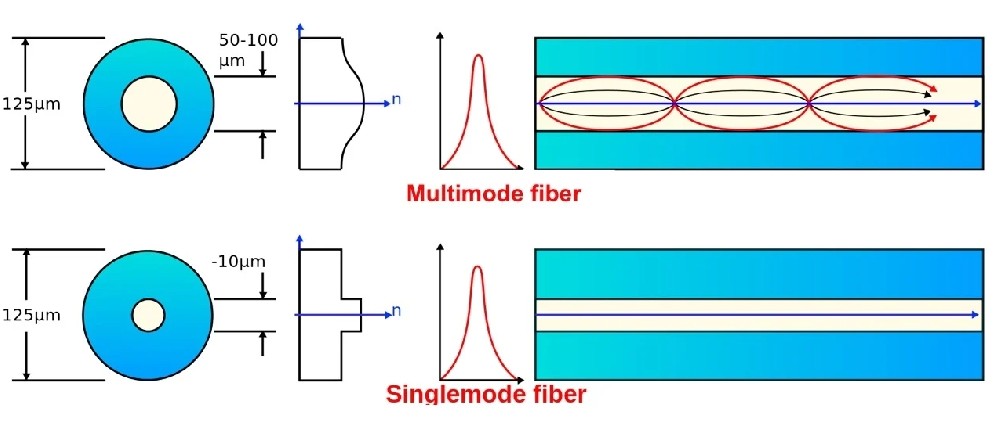Single-mode fiber (SMF) and multimode fiber (MMF) are two different types of optical fiber used in telecommunications and networking. The primary difference between them lies in the way light travels through the fiber core.
Single-mode Fiber (SMF):
In single-mode fiber, the core diameter is very small, typically around 9 micrometers. This small core allows only one mode of light to propagate through the fiber, hence the name "single-mode."
Due to the single mode of light propagation and minimal dispersion, single-mode fiber offers high bandwidth and longer transmission distances. It's commonly used in long-distance telecommunications, such as in long-haul networks, submarine communications, and high-speed internet connections.
Single-mode fiber supports higher data rates and is less susceptible to attenuation and dispersion compared to multimode fiber.
Multimode Fiber (MMF):
Multimode fiber has a larger core diameter, typically around 50 or 62.5 micrometers. This larger core allows multiple modes of light to propagate through the fiber simultaneously, hence the name "multimode."
Due to multiple modes of light propagation and greater dispersion, multimode fiber has lower bandwidth and shorter transmission distances compared to single-mode fiber.
Multimode fiber is commonly used in shorter-distance applications such as local area networks (LANs), campus networks, and data centers.

Single Mode vs Multimode Fiber Speed:
When comparing the "speed" of single-mode and multimode fiber, it's important to note that the speed primarily refers to the data transmission rate or bandwidth capacity of the fiber.
Both single-mode and multimode fibers can support high-speed data transmission, but single-mode fiber typically supports higher speeds over longer distances compared to multimode fiber.
The speed of data transmission in fiber optics is often measured in terms of gigabits per second (Gbps) or terabits per second (Tbps), and it depends on various factors including the type of fiber, transmission equipment, and network architecture.
In summary, while both single-mode and multimode fibers can support high-speed data transmission, single-mode fiber generally offers higher bandwidth and longer transmission distances compared to multimode fiber. The choice between them depends on factors such as the distance of the link, required bandwidth, and the specific application's requirements.
03-21
202502-12
202509-12
202409-05
202408-16
202408-07
202408-06
202408-02
202407-30
202407-29
2024
